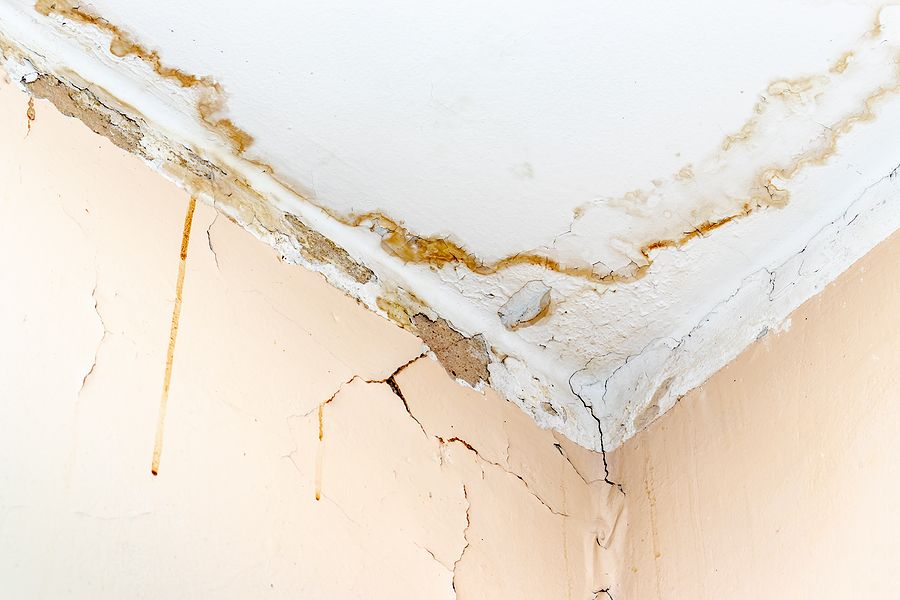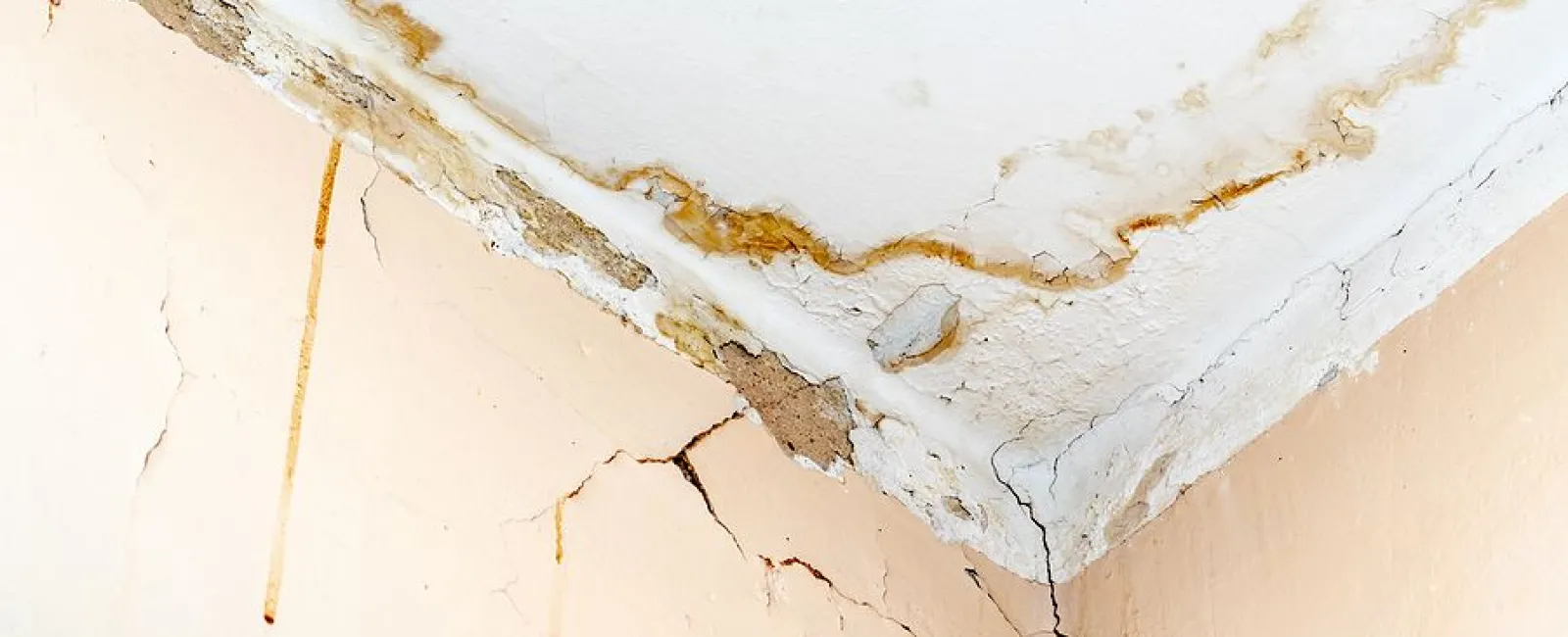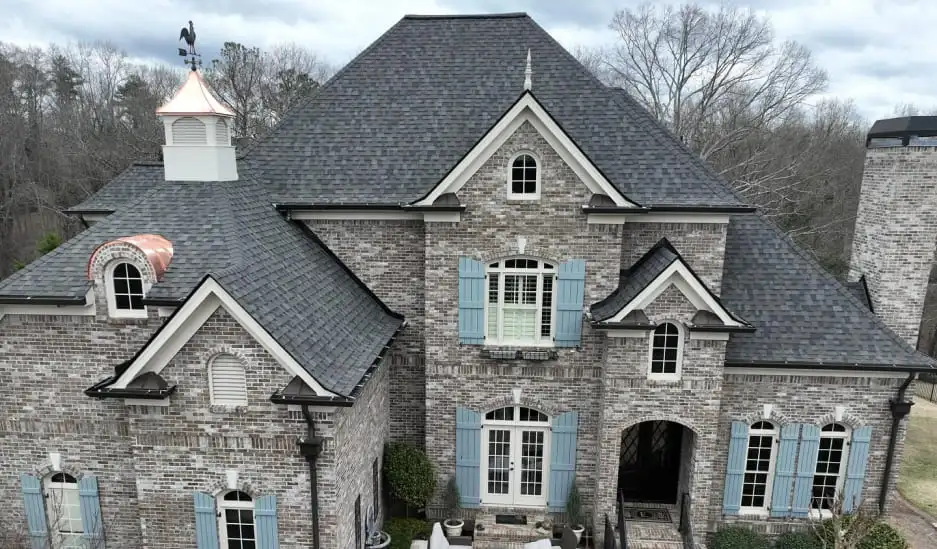Roof leaks are a common roof issue that should be fixed as soon as possible to prevent any water damage. While there might be some obvious signs of a roof leak like stains on your ceilings or mold in your home, other signs aren’t as visible unless you routinely inspect the roof. If you’re wondering how to tell if your roof is leaking, here are 5 signs that your roof might be letting water in.

1. Ceiling Stains
If stains start to appear throughout your home in the ceiling, then it’s a clear sign that you have a water leak coming from your roof. These stains will often have some tints of brown around them, making them an unpleasant sight. Ceiling stains from roof leaks are often a result of damaged shingles, deteriorated flashing and vulnerabilities in the seals around roof vents. Before you even think about cleaning them, you’ll want to fix the source of the leak to prevent more ceiling stains from showing up.
2. Mold in Your Home
Mold is a strong giveaway that you have excessive moisture in your home often as a result of a leak. Depending on where the mold is found, it can be due to a roof leak if you find any mold in your attic or nearby areas. Excessive moisture that comes in from your roof will make its way into your attic and create a breeding ground for mold. It’s not always a guarantee that a roof leak caused the mold growth since it can also be caused by poor attic ventilation, but a quick inspection of your attic for issues might reveal the true problem. You will want to fix the issue that caused the mold and remove the mold before it spreads to other areas in your home.
3. Strong Odors
Apart from ceilings stains, strong odors are another of the most common signs of a roof leak. Water that reaches your insulation and causes it to become wet will often cause these musty odors in your home, which can be quite strong. If mold has already grown in your home as a result of the leak, then the odors might also be coming from that. Apart from having to fix the roof leak, you’ll also want to replace the wet insulation or remove the mold if that was the case.
4. Missing and Damaged Shingles
If you inspect your roof and start to see signs of roof damage like missing or damaged shingles, then you might currently have or will eventually have a roof leak. Even if you don’t visibly see a leak in your home, there might be a small leak currently seeping into the attic that isn’t too noticeable. Missing or damaged shingles won’t always necessarily cause a leak, as it depends on where the shingles are located. If the missing shingle is causing a seam to become exposed, then there is a good chance water might be coming in.
5. Damaged Flashing
Shingles aren’t the only roof material you need to inspect since roof flashing is just as important to keep out water. High winds can sometimes cause the flashing material to become loose and become lifted. When that occurs, rainwater can seep in beneath it and make its way into your home. It’s a good habit to inspect your flashing each season to check for any damages. It can be a huge annoyance to have a leak caused by flashing since the water damage it causes will often appear at a different point than where it came from, making the origin of the leak difficult to find.
How to Find a Roof Leak
If you start to notice any signs of a potential roof leak, then finding where the leak is coming from should be a priority. There are two methods you can do to try and figure out where a leak is coming from.
One way is by inspecting your attic and looking for potential issues. You’ll want to be on the lookout for dark spots, signs of mold or wet insulation, as this will often be caused by excessive moisture. The area that is damaged doesn’t always indicate that the problem area is directly above it since the water might have been diverted there; however, it will give you a good indication of where the problematic area might be.
The second method involves having you or a partner get on the roof with a hose, assuming one of you is comfortable with it. Have one person with the hose get on top of the roof and start spraying the roof with water while the other person is below in the attic looking for any signs of water coming in. If you start to see water coming in from a certain point, it will give you a general idea of the affected roof area. Start near areas where there are obvious signs of roof damage like damaged shingles, deteriorated flashing, and roof vents. If there isn’t attic access, then the person on the roof should just be looking at the damaged roof areas for vulnerabilities. Definitely don’t do this step if going onto the roof puts you or your partner in physical risk.
If you’re still having issues trying to figure out where the roof leak is coming from, then it is time to call up a roofer at this point.
What to Do When a Roof Is Leaking
Once you’ve found the source of the leak, your next question might be, “My roof is leaking. What should I do?” Unless you consider yourself an experienced handyman and think you can fix the leak by yourself, hiring a roofer to fix the leak might be preferable since they will know exactly what to do when a roof is leaking. The initial cause of the leak might not be too obvious and it might be a sign you need to replace your roof if the damage is extensive. If you don’t know how to tell if you need a new roof, consulting with a professional roofer might be in your best interests.



